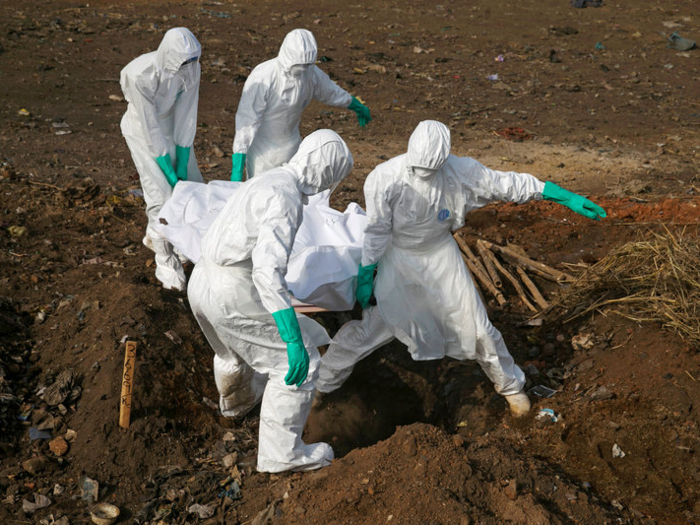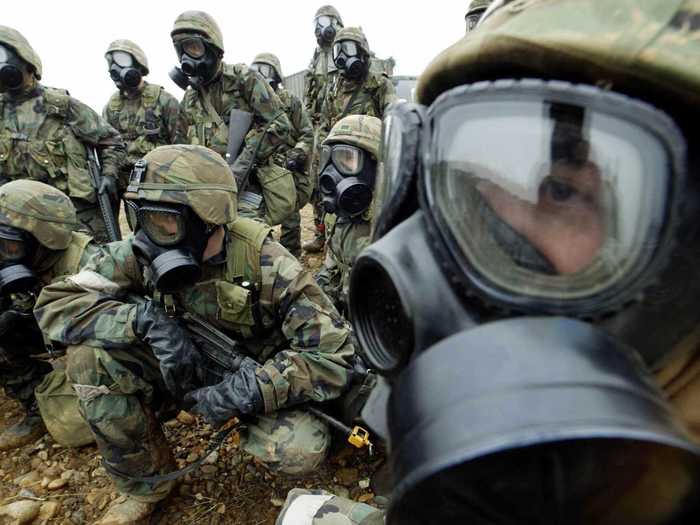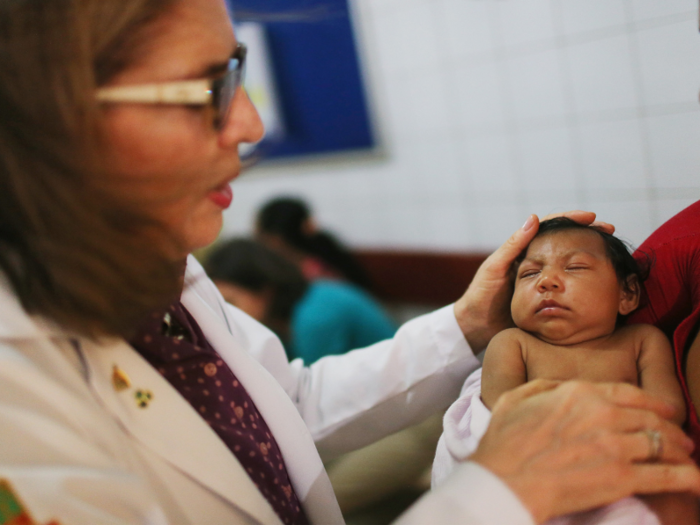- Home
- slideshows
- miscellaneous
- Bill Gates says a pandemic flu could kill 30 million people - these are the deadly diseases that scare experts the most
Bill Gates says a pandemic flu could kill 30 million people - these are the deadly diseases that scare experts the most
The flu

Ebola, Marburg, Lassa, and other viral hemorrhagic fevers

Viral hemorrhagic fevers are spread by a variety of viruses and are mostly untreatable. They affect many organs and damage blood vessels, sometimes causing internal and external bleeding.
Infections often cause fever, weakness, soreness, and headache, often followed by vomiting, diarrhea, rashes, organ failure, and bleeding.
These diseases regularly emerge from the wild, as Ebola did again just recently. They can be extremely deadly — in past Ebola outbreaks, fatality rates ranged between 25% to 90%, with an average of about 50%.
Hemorrhagic fevers feature on both the CDC's list of biological agents that could pose a national security threat and on the WHO's list of diseases that can cause a public health emergency, and for good reason.
The 2014 Ebola outbreak in West Africa infected more than 28,600 people and killed more than 11,300. Such outbreaks can also cause public terror. Experts widely agree that the world needs to develop better ways to contain diseases like this. In the case of Ebola, researchers are testing an experimental vaccine to see if it can help stop the current outbreak.
If a strain of this type of disease were to mutate or be modified to become more contagious, that could cause worldwide devastation.
Coronaviruses like MERS and SARS

Coronaviruses are commonly found around the world, living in species like bats and camels. They take their name from crown-like spikes on the virus' surface.
For years, they were thought to be mostly innocuous. But in recent years, two coronaviruses that cause severe and potentially deadly respiratory symptoms in humans started to spread.
In 2002, SARS (severe acute respiratory syndrome) infected 8,000 people, killing approximately 10% of those patients. MERS (Middle Eastern respiratory syndrome) started infecting humans in 2012. While it is less contagious than SARS, it's more deadly, killing about 30% of those infected.
Most patients with these conditions first show signs of fever and many have gastrointestinal issues. These symptoms are often followed by shortness of breath and pneumonia.
This type of transition shows how quickly a new illness can emerge or transform to become a new public health threat — a process that regularly occurs. The WHO says there is an urgent need for research into ways to prevent the spread of these diseases.
Pathogens like anthrax, botulism, plague, tularemia, or smallpox that could be turned into bio-weapons

The term pathogen refers to any sort of microorganism that can cause disease. The CDC considers the four bacteria and smallpox virus listed here to be pathogens that could become the biggest national security threats if they were turned into bio-weapons.
More specifically, the fear is that a malignant actor could obtain and cultivate these pathogens in a lab, then release them in a cloud above a city or spread them throughout a public transportation system.
In some cases, these diseases could be modified in ways that would make them more contagious or make then cause more severe infections. These biological agents are therefore considered national security threats because they could be deadly and because their dispersal could cause extreme panic.
Some of these diseases, like the four bacteria here, still regularly emerge in the wild and could be obtained from natural sources. Smallpox has theoretically been wiped off the Earth, but as Gates said at his recent talk, there's reason to think a small non-state actor could still build a deadlier form of the devastating disease in a lab.
Zika

Researchers had known about Zika virus before it started infecting people in South America in 2014. But until then, it hadn't been considered a disease of primary concern.
Once the virus started spreading throughout the Americas, it became clear that Zika was causing damage in fetal brains when pregnant women got infected.
Though Zika is not discussed in the news as frequently now as it was a few years ago, it's still considered a serious problem by the CDC. Experts still advise that people considering getting pregnant avoid traveling to locations where Zika is prevalent. Those warnings are unlikely to change anytime soon.
The WHO considers research into ways to treat or prevent Zika an urgent matter.
Malaria

Malaria is a persistent killer of people and will continue to cause harm until it's stopped. Right now, malaria parasites kill more than 400,000 people a year, a number that could climb back into the millions if drug-resistant strains spread further than they have so far.
Malaria isn't concerning for the same reasons that other diseases on this list are, since we know much more about malaria and health workers have been able to contain it and eliminate it in certain parts of the world.
But malaria's persistent death toll shows how complicated the battle against a single disease can be, and serves as strong evidence that great effort and investment are needed to deal with ongoing disease threats.
Disease X

On the list of priority diseases that require urgent research, the WHO added a new entry earlier this year: Disease X.
"Disease X" stands for the unknown.
The existent threats out there are serious, but at least scientists and researchers know about them. When new diseases show up that we haven't prepared for — like the 1918 flu or Ebola in 1976 — history has shown that's when things get especially dangerous.
Surprise outbreaks expose all of our weaknesses, including the challenges involved in stopping disease spread and the amount of time it can take to develop a treatment.
While researchers can try to prepare for the emergence of the next pandemic pathogen, it's no easy task.
Popular Right Now
Popular Keywords
Advertisement